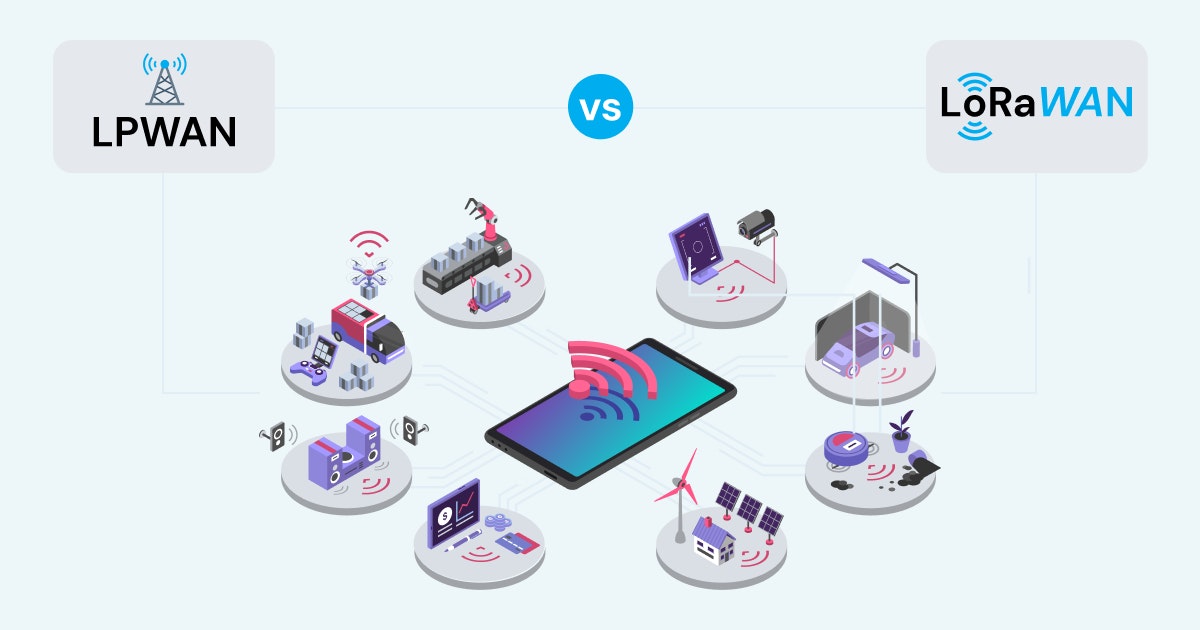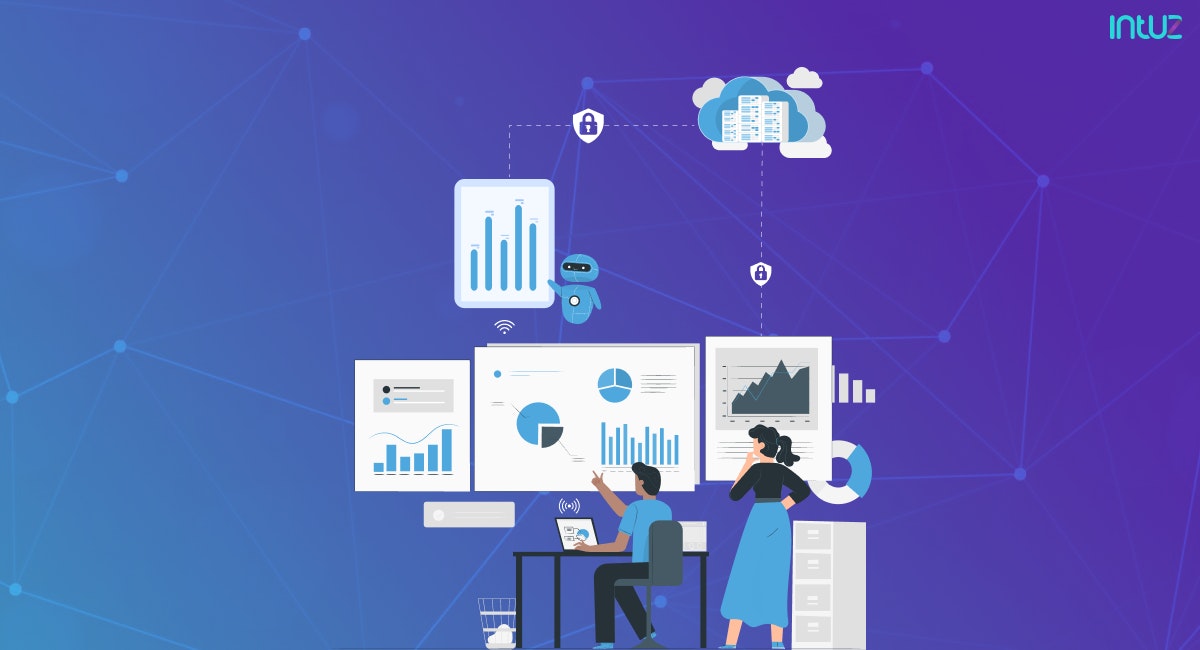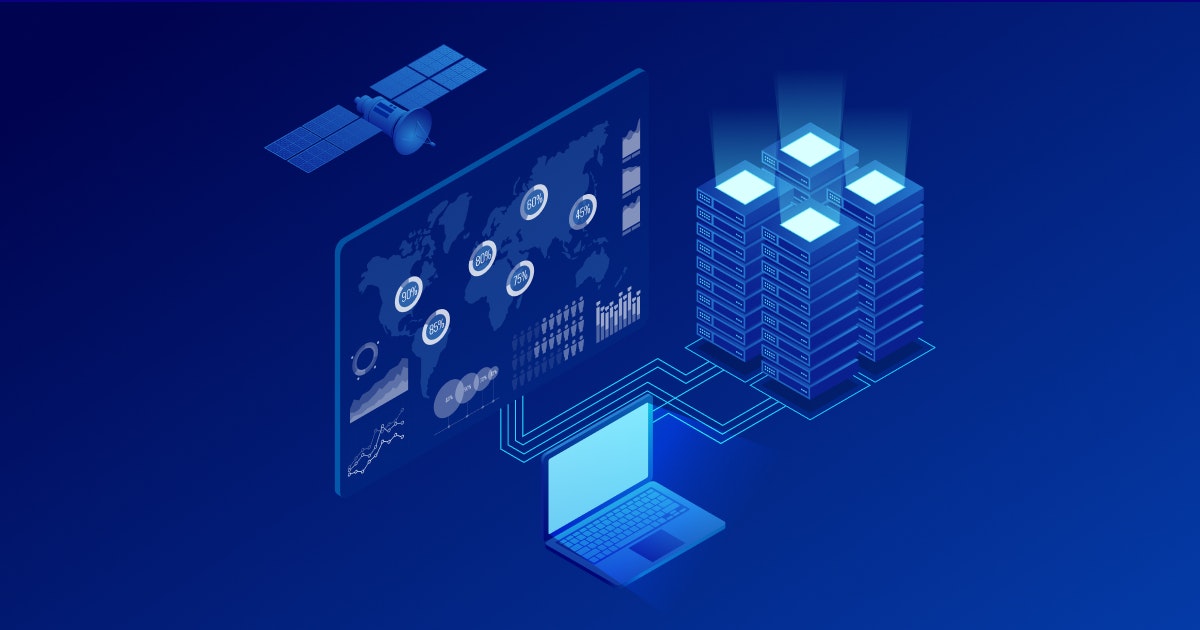Table of Content
The Internet of Things (IoT) technology has found its purpose in both consumer-level and industrial settings. Even though the ecosystem has grown by leaps and bounds, businesses operating in the domain need to stay aware of the shifts in the market. The majority of IoT applications require data to be fetched and transmitted across long distances - remotely.
Moreover, IoT deployments in agricultural settings and warehouses involve devices that are required to transmit small packets of information periodically for years on a single battery charge! And if you want to share information over a wireless communication network over long distances, you either have to decrease signal bandwidth or increase signal power.
LPWAN and LoRaWAN®
That is where LPWAN and LoRaWAN® enter the picture. LPWAN or “Low Power Wide Area Network” is a kind of wireless telecommunication vast area network that engineers long-range communications at a low bit rate amongst other things, such as battery-operated sensors.
LPWAN is not a single technology but involves various low-power, wide-area network technologies of many forms and shapes. LPWANs use licensed or unlicensed frequencies, including open-standard and proprietary options.
On the other hand, LoRaWAN® connects IoT devices using LoRa®wireless technology, developed and open-sourced by the supplier of analog and mixed-signal semiconductors, Semtech. It covers vast ranges and ensures long battery life for devices in the field. It also enables bi-directional communication and brilliant indoor penetration for IoT solutions.
Trends and statistics: LPWAN and LoRaWAN®
The LPWAN market has had substantial growth over the last two years despite the Coronavirus pandemic and chipset shortages, as per a recent report. In fact, four technologies, namely, long-range (LoRa), Sigfox, NB-IoT (narrowband IoT), and long-term evolution for machines (LTE-M), account for over 95% of the global installed base.
China is the top country to adopt smart metering. And although the migration to 5G technology from 2G and 3G technologies is happening slowly, the reliance on low-power satellite IoT connectivity is invariably on a rapid increase.
What would be interesting to see is the kind of support LPWAN and LoRaWAN® bring to the table when it comes to the IoT ecosystem. In this article, we will strive to study both technologies in a bit more detail:
LPWAN
A brief history of LPWAN
It was Sigfox that popularized LPWANs two decades ago and deemed it as an effective alternative for fulfilling power requirements and licensing costs of cellular networks.
However, as time passed, 3GPP and significant cellular carriers in the market realized they were not happy with the way Sigfox was handling IoT-specific LPWANs and isolating them from the LPWAN market, which was slowly becoming a significant hub for industrial clients.
That is when 3GPP started standardizing NB-IoT and LTE CAT as cellular-based LPWANs that would operate primarily within licensed bands. In addition, 5G technology is poised to shake the LPWAN landscape for the better.
It offers high speed, a greater capacity than 4G LTE networks, and lower latency. 5G is undoubtedly one of the fastest and most robust technologies the world has ever seen. That means quicker downloads, low latency, and a more favorable user experience.
Plus, 3GPP allows 5G technologies to operate in unlicensed bands, specifically 60 GHz, 5 GHz, and 3.5 GHz, further capturing non-cellular LPWANs.
LPWAN as a solution
LPWANs allow IoT software providers to design and deploy IoT systems that can send small amounts of data in a systematic fashion, over a period of time, in remote areas with limited network connections. These are battery-powered IoT devices that can last for years.
The reason LPWANs have seemingly cracked the code is that they make IoT devices send only small packets of data periodically or even infrequently, such as reports and status updates, at a pre-programmed interval, based on an external trigger.
Thanks to cellular LPWAN, there is more flexibility in what “wide area” or “low power” means, directly influencing the performance of IoT devices.
Features of LPWAN
LPWAN technology enables IoT devices to operate in a reliable fashion for up to a decade on a single battery charge. This duration is ideal for IoT devices with limited mobility.
LPWAN is used in smart meters, smart agricultural platforms, and smart building apps. It supports data transfer in small packets, ranging in size from 10 to 1,000 bytes and enabling improved efficiency and optimized speeds.
The technology delivers a long-range - >80 km line of sight, >10 km suburban, and >5 km urban. It is secure and functions in unlicensed spectra.
As global IoT connections are predicted to grow to 22 billion by 2025, LPWAN will be a prominent facilitator in this regard. The core value of IoT lies in its unprecedented transparency in physical assets, people, and processes to enable informed decision-making.
Often, this transparency comes via battery-powered IoT sensors that are distributed over large and structurally dense campuses such as mine sites, commercial buildings, factories, and oil fields. With an increased reliance on 5G in the next few years, we can expect a faster pace at which IoT deployment occurs.
Advantages and Limitations of LPWAN
Advantages and Limitations of LPWAN
Advantages of LPWAN
Think of smart garbage disposal meters, soil and water quality sensors, or smart parking meters. These are constantly exchanging data over long distances for a significant period. Given the range of LPWAN data packets, sensors can even report in harsh climates and from the underground. But there are other pros of LPWAN, including:
1. Low number of gateways
Communication over long distances requires a relatively less number of gateways. This, in turn, reduces infrastructure expenses. For instance, the entire city of Amsterdam is only covered with 24 gateways, which is impressive given the density of buildings. LPWAN can operate at extended ranges quite comfortably.
2. Free radio spectrum
LPWAN allows anyone to transmit and receive data on the free radio spectrum - without any license or payments. That means anyone can be a gateway provider and have zero data costs.
3. Low power usage
The power consumed by the IoT device depends on how often and how data is transmitted over a period of time. The device does not transmit data excessively and enables battery life of 5-10 years. The microprocessor goes into sleep mode when the devices are not operating.
Limitations of LPWAN
No technology is perfect, and even though LPWAN is a boon when it comes to managing IoT devices and sensors in remote locations, it also has a breaking point. Here are the top limitations of LPWAN you should know about.
- LPWANs are unfit for applications that require data to be transferred frequently and/or in large volumes. They do not deal with data packets ranging less than 50 kbit/s.
- LPWAN supports low data rates, so it cannot be used for high data rate applications. Many IoT development tools will not accept that.
- Because it can communicate over a free radio spectrum, there is a high chance of other devices also operating on the same frequency. This can clog the network and hamper data transmission.
- LPWAN provides high latency between end-to-end nodes, making the technology unsuitable for low latency applications.
IoT Device Management: Importance, Challenges, Solutions
Learn MoreLoRaWAN®
A brief history of LoRaWAN®
LoRaWAN® was invented in 2015 by a supplier of analog and mixed-signal semiconductors, Semtech, to build and manage IoT solutions efficiently. Actility and Keeling created the first LoRaWAN® outdoor gateway, after which MultiTech designed one with the conduit.
LoRaWAN® as a solution
LoRaWAN® is a low-power wide-area networking protocol based on LoRa®technology. It supports a broader transmission area than Wi-SUN. The technology connects devices to the internet, managing communication between end-node devices and network gateways wirelessly.
Smart cities and industrial spaces seemed to have found a preference in Lorwan because of its long-range, bi-directional communication protocol. Plus, the IoT devices and sensors that run on this technology consume very low power.
Features of LoRaWAN®
LoRaWAN® can reach up to 30 kilometers in flat areas without any interruptions and three kilometers in urban environments. LoRaWAN uses minimal amounts of energy, which means the IoT sensors can continue functioning for decades on end.
The technology is also very safe and implements 128-bit encryption on all transmissions - similar to VPN and cellular networks.
LoRaWAN® can run on unlicensed radio networks across the globe, which means there is no need to pay an operator for using the network.
Advantages and Limitations on LoRaWAN
Advantages and Limitations of LoRaWAN
Advatanges of LoRaWAN®
LoRaWAN® is the systems architecture and communication protocol for the LoRa®network, a wireless data communication IoT technology. It enables reliable and secure communication and adds headers to the data packets. Here are the pros to know about:
1. Longer range
The communication range of the low-powered sensors running on LoRaWAN® is measured in kilometers.
2. Low power equals more battery
Low power means longer battery life for IoT devices. LoRaWAN® ensures the sensor batteries last for years before they run out. That is the biggest advantage of LoRaWAN®.
3. Simple architecture
A single LoRaWAN® gateway device is engineered to handle thousands of end devices or nodes. Despite the large numbers, the technology is easy to deploy due to the simple architecture.
4. Better compared to Sigfox
The LoRaWAN® network delivers a better payload (100 bytes) compared to Sigfox, which is a mere 12 bytes. There is also no restriction to the maximum number of daily messages that can be sent compared to Sigfox, which can only send 140 messages per day.
5. Fast deployment
LoRaWAN® deals with less bandwidth, which is why it is such an obvious choice for practical IoT deployments with poor data transmissions that are not constant.
Limitations of LoRaWAN®
LoRaWAN® is not suitable for every IoT device or ecosystem. Therefore, it is essential for you to understand the limitations, which are as follows:
- It is not ideal for large data payloads or for apps that require lower latency and bounded jitter needs.
- Because LoRaWAN® can work on unlicensed radio networks, you may get interference on that frequency, or the data rate may be below. GSM operators usually pay a hefty licensing fee to their respective governments for using those frequencies. If you plan to do the same, using LoRaWAN® can be a costly option.
- In LoRaWAN®, a device is hardcoded with keys required for communicating with the network. This makes it a less secure but more accessible connection.
LPWAN vs LoRaWAN®: A comparative analysis
Now that you have read this far, here is an overview of the significant differences between the two IoT network technologies:
LPWAN vs LoRaWAN®: A comparative analysis
Over to you
The LPWAN technology has gained prominence in the IoT ecosystem because it is cost-effective and delivers multiple features such as security, longevity, and mature and wide-reaching communication networks.
LoRaWAN® is offered by 70+ network operators worldwide with IoT deployments in 100+ countries. The technology has a robust ecosystem of developers, hardware vendors, IoT platforms, partners, IoT technology vendors, system integrators, and telecom providers.
Both technologies have their benefits and limitations and are constantly evolving to match up with the IoT landscape.
If you want to know more about IoT technology or the best, get kick-started with an IoT project; please speak to Intuz, a leading IoT app development company. We have worked on various IoT projects and possess the expertise to accelerate your business objectives. Please fill out the form here so we can call to discuss your requirements.





